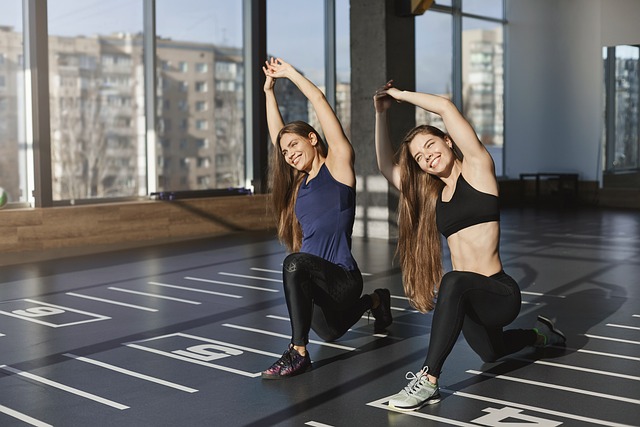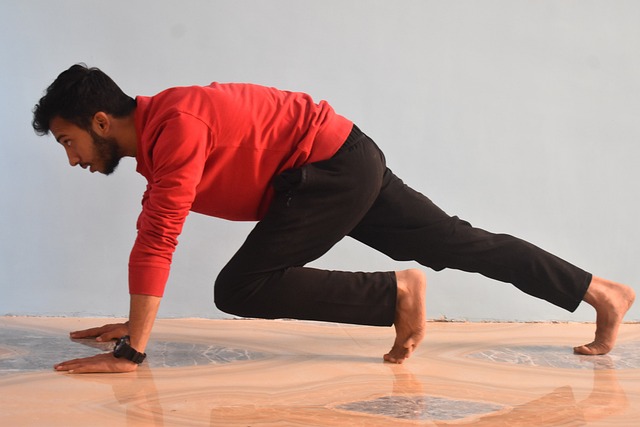
Effective exercises you can do at home to aid in weight loss
- High-Intensity Interval Training (HIIT): HIIT workouts involve short bursts of intense exercise followed by brief periods of rest. This type of training has been shown to be effective for burning calories and boosting metabolism. You can find numerous HIIT workout routines online or through fitness apps.
HIIT workouts are intense, time-efficient workouts that involve short bursts of high-intensity exercise followed by brief recovery periods. They can be done in the comfort of your own home with little to no equipment. Here’s an example of a HIIT workout routine:
Warm-up: Begin with a 5-10 minute warm-up to prepare your body for the workout. You can do light cardio exercises such as jogging in place, jumping jacks, or marching in place.
Exercise Set 1: Perform each exercise for 30 seconds, giving your maximum effort, followed by a 10-second rest. Complete the entire set before moving on to the next exercise.

– Jumping Jacks: Start with your feet together and arms at your sides. Jump your feet out wide while simultaneously raising your arms overhead. Jump back to the starting position and repeat.

– High Knees: Stand with your feet hip-width apart. Lift your right knee up towards your chest while quickly switching to lift your left knee. Continue alternating rapidly, pumping your arms as if running in place.

– Mountain Climbers: Get into a high plank position with your hands directly under your shoulders. Quickly alternate bringing your knees towards your chest, as if running in a plank position.
– Burpees: Begin in a standing position. Drop down into a squat position, place your hands on the floor, and kick your feet back into a plank position. Immediately jump your feet back to the squat position and jump up explosively, reaching your hands overhead.
Exercise Set 2: Repeat the same format as in Exercise Set 1, but choose different exercises to target different muscle groups. Some options include squat jumps, push-ups, lunges, or bicycle crunches. Aim for 30 seconds of intense exercise followed by a 10-second rest for each exercise.
Repeat: Perform 3-5 sets of Exercise Set 1 and Exercise Set 2, resting for 1-2 minutes between sets.
Cool-down: Finish the workout with a 5-10 minute cool-down, which may include stretching exercises to help your muscles recover.
Remember, the key to a successful HIIT workout is pushing yourself to your maximum effort during the intense exercise intervals and allowing your body to recover during the rest periods. The duration and intensity of the workout can be adjusted based on your fitness level and preferences.
- Cardiovascular Exercises: Engaging in activities that get your heart rate up, such as jogging in place, jumping jacks, or skipping rope, can help you burn calories and lose weight. Aim for at least 30 minutes of continuous cardio exercise most days of the week.
- Bodyweight Strength Training: Incorporating strength training exercises into your routine can help build muscle and increase your metabolism. Some effective bodyweight exercises include squats, lunges, push-ups, planks, and burpees. You can find workout routines that focus on bodyweight exercises for weight loss.
- Yoga or Pilates: These practices may not have the same calorie-burning impact as high-intensity exercises, but they can still contribute to weight loss by improving flexibility, strength, and balance. Additionally, they promote relaxation and stress reduction, which can indirectly support weight loss efforts.
- Circuit Training: Circuit training involves moving from one exercise to another in rapid succession, targeting different muscle groups. This type of workout keeps your heart rate elevated while providing a mix of cardio and strength training benefits.
Remember to start slowly and gradually increase the intensity and duration of your workouts. It’s important to listen to your body and make adjustments as needed. Additionally, combining exercise with a balanced, calorie-controlled diet will maximize your weight loss results. If you have any underlying health conditions or concerns, it’s advisable to consult with a healthcare professional before starting a new exercise program.


